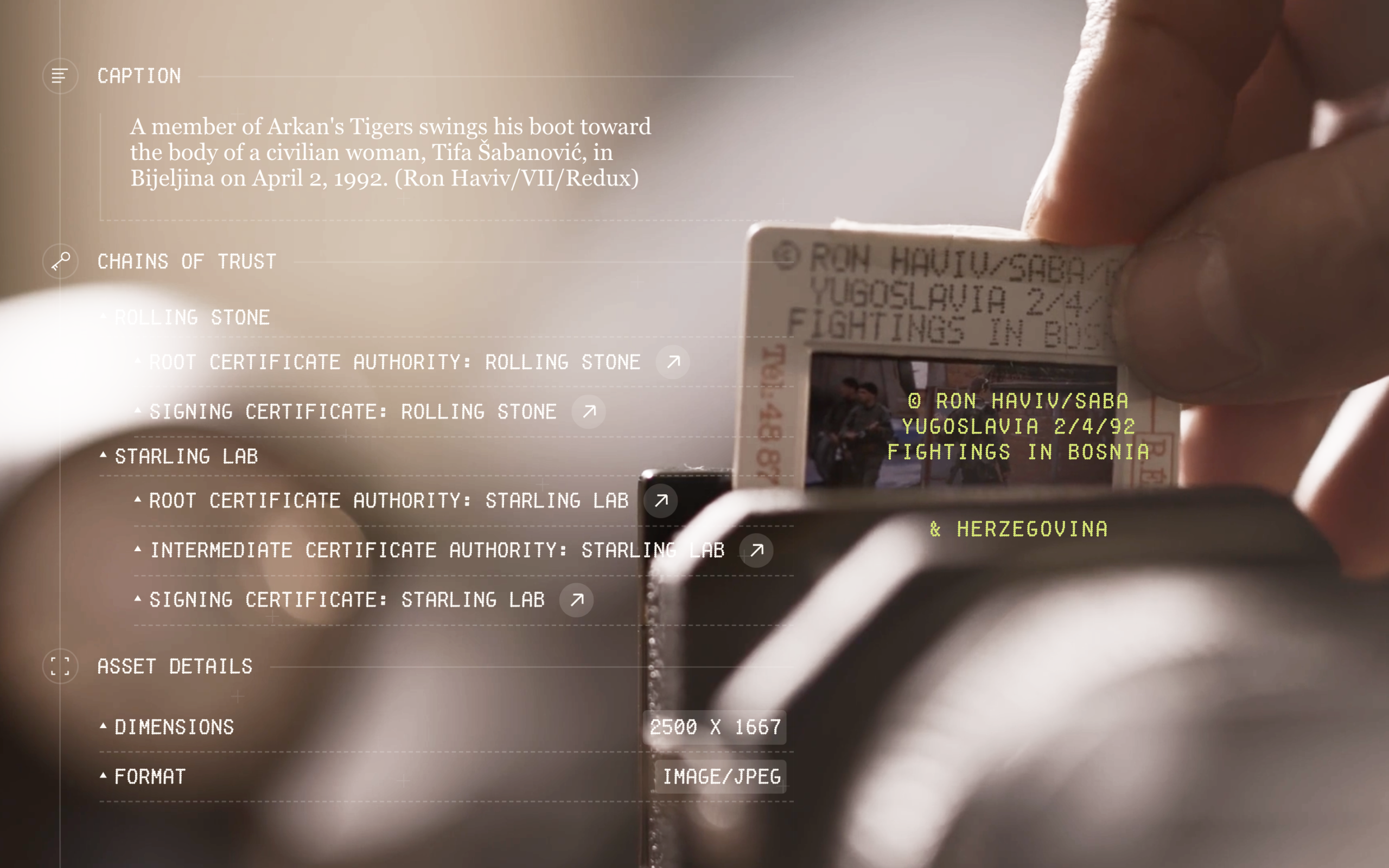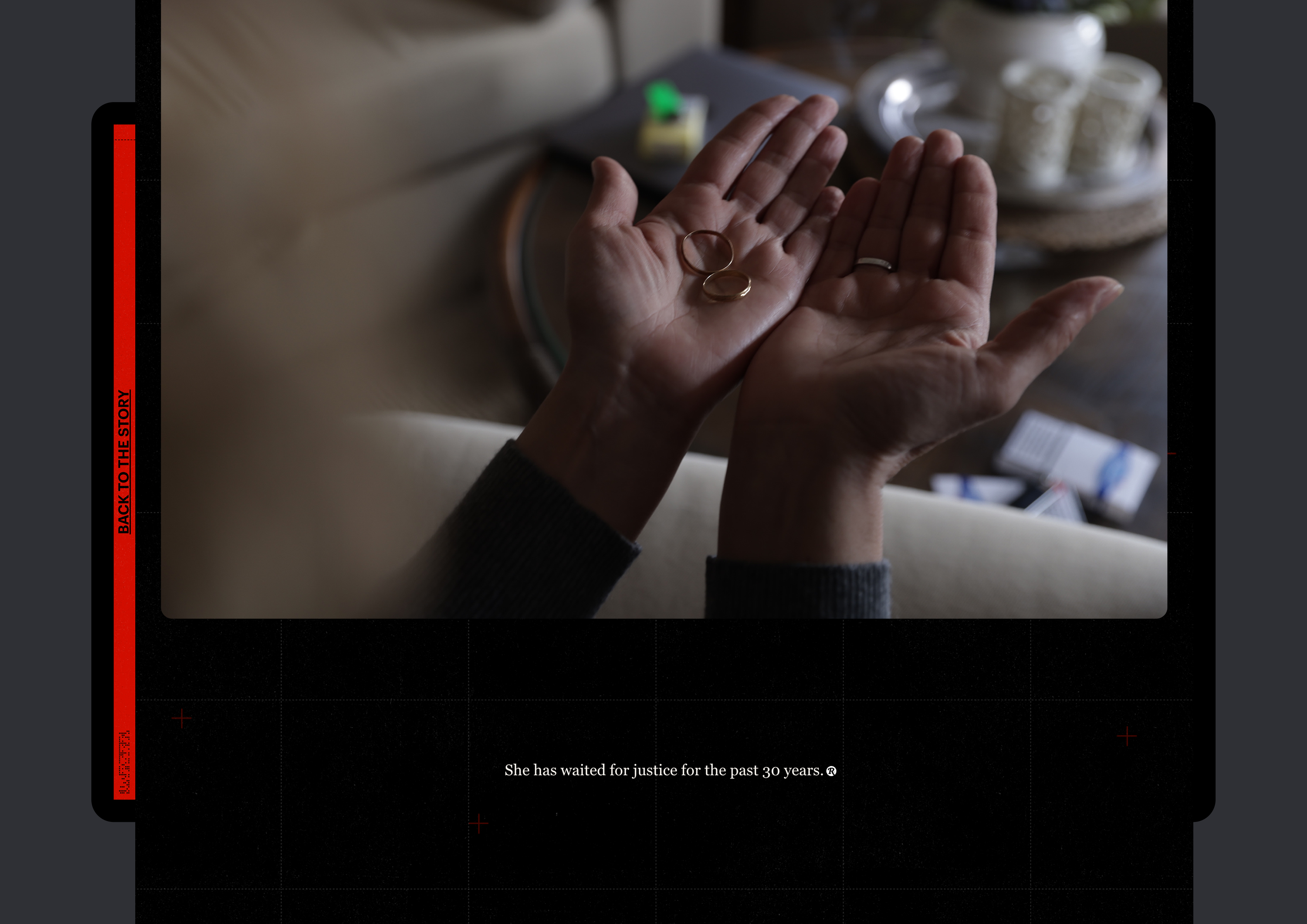
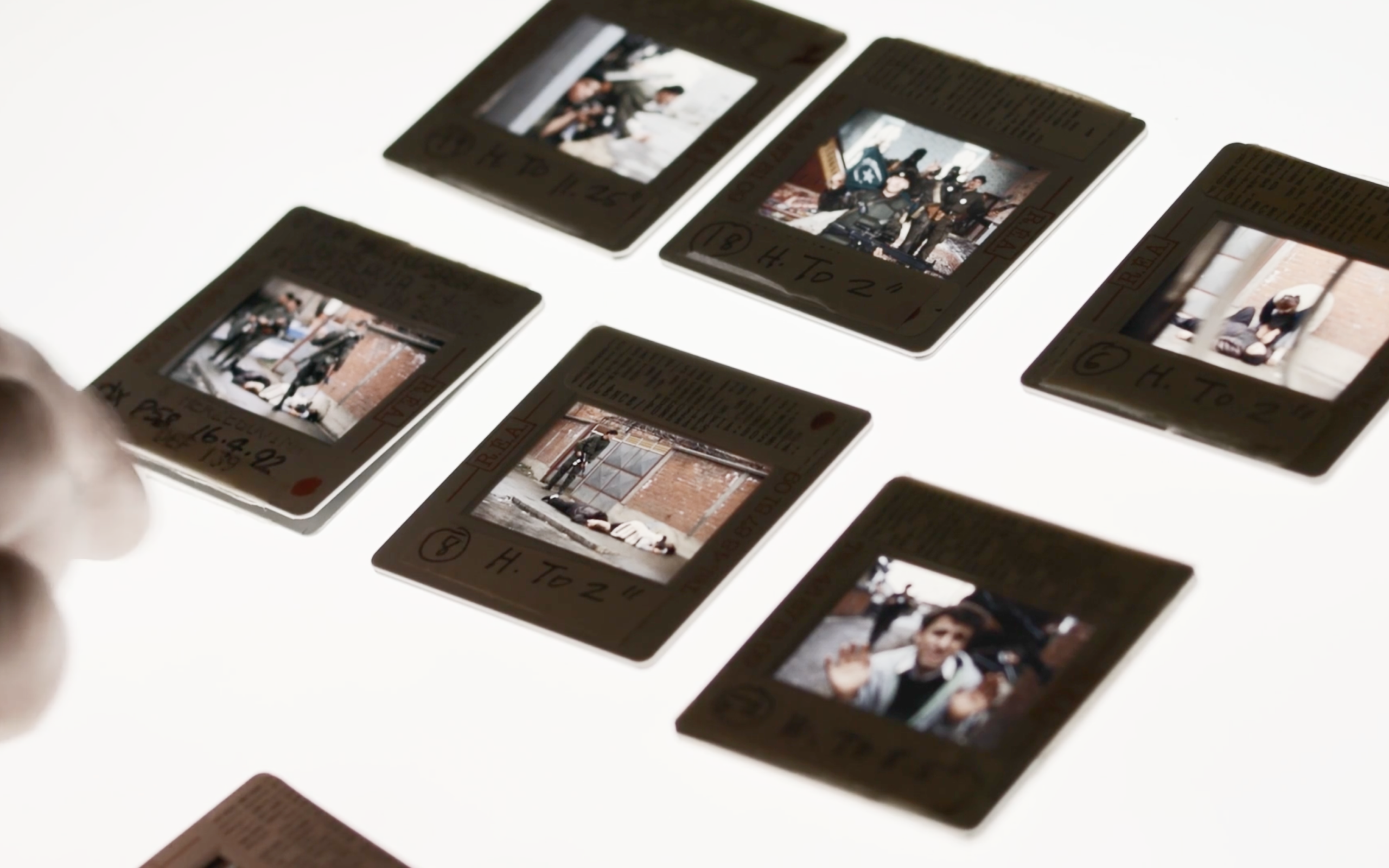


The DJ and the War Crimes
Investigative journalism meets blockchain media tech in search of justice
The DJ and the War Crimes is an immersive storytelling experience for Rolling Stone which forensically retraces an infamous Bosnian war crime committed by a Serbian Paramilitary Unit in the 1990s.
Investigating a war crime, 30 years on
On April 2, 1992, in the Bosnian town of Bijeljina, US photographer Ron Haviv took a now-famous photograph of a member of the infamous Serbian paramilitary unit Arkan’s Tigers swinging his boot at the body of a civilian lying on the pavement. She’d been shot dead only moments earlier.
Thirty years on, Rolling Stone combined traditional investigative journalism with blockchain forensics to identify the soldier and push for accountability and justice. Working closely with the Starling Lab for Data Integrity at Stanford and USC, we built a site to tell the story of that day in 1992, the investigation into those involved, and the nascent cryptographic technology that we hope can help prevent similar massacres in the future, in Ukraine and beyond.
The investigation, led by Sophia Jones, uncovered troves of imagery from Ron Haviv, the photojournalist who witnessed the atrocity. They also combed Serbian payroll documents and social media pages connected to “Arkan’s Tigers” to track the participants since the conflict, including a well-known trance DJ in Europe.

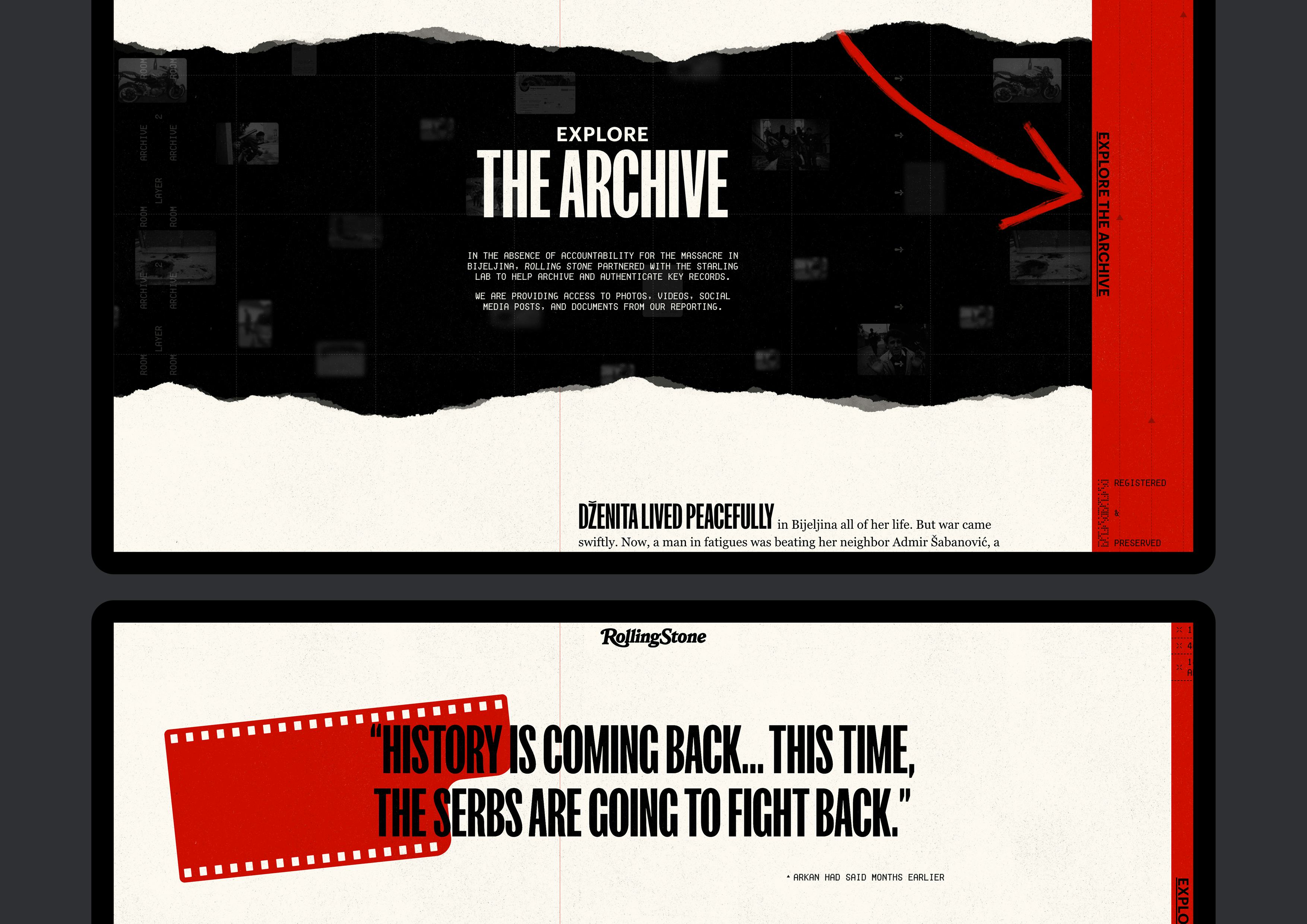





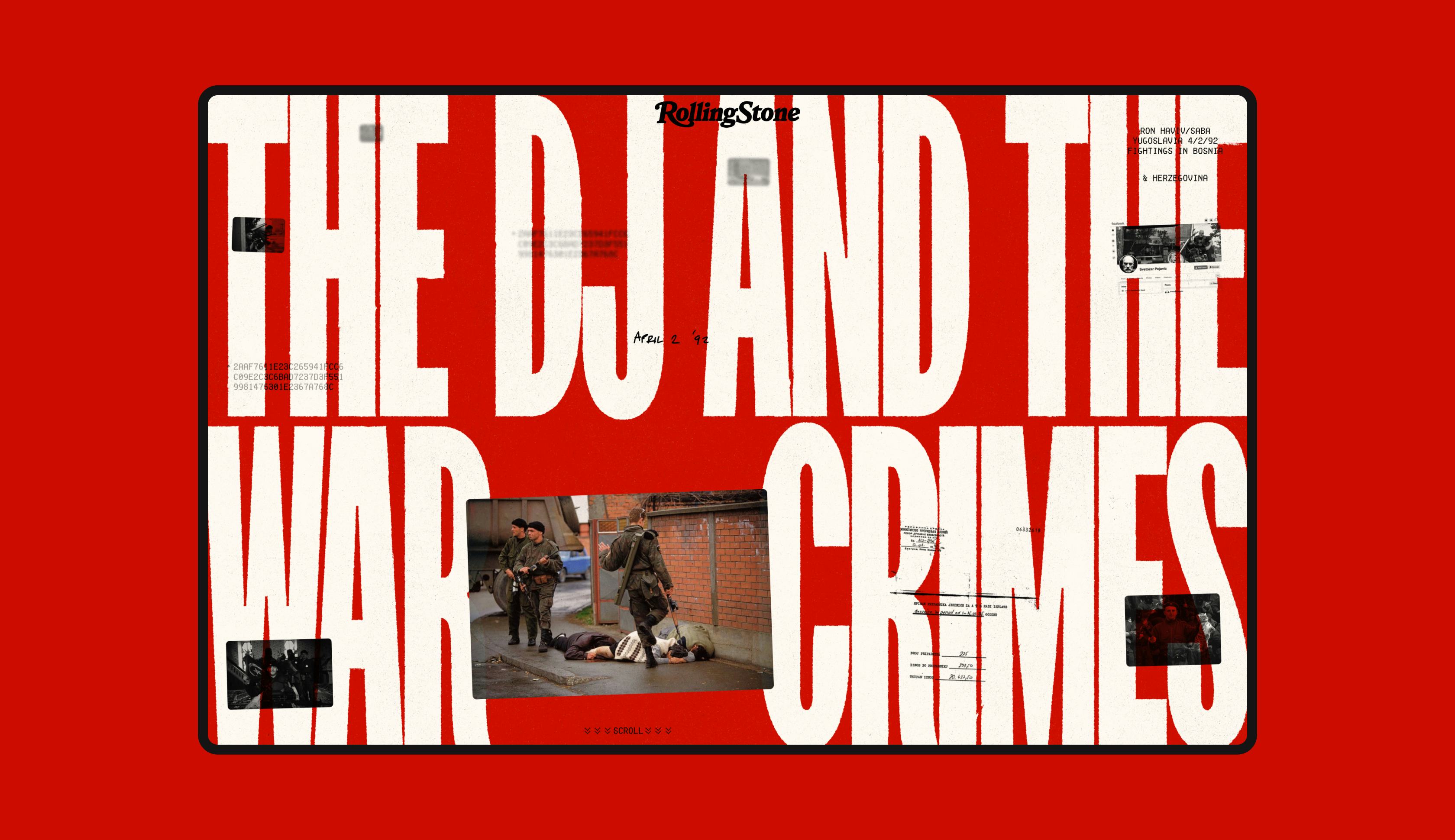
Building up layers
We used layering effects and animations throughout the site, to mirror the process of the investigation and give the feeling of an evidence board, mapping connections between disconnected moments to locate the truth.
“There are several parallel stories in this piece and the challenge was to tell them all at once.”
Nathan Walker
Designer/Developer
Visual investigations
We created a sequence of newly-published images which show the eponymous DJ from multiple angles, which we used to walk readers through a visual comparison of pieces of his equipment, uniform and distinctive white sunglasses. Trawling through Bosnian websites and library archives we also managed to match architectural features of buildings in the background of the images and geolocate the general vicinity of the killers’ movements that day.

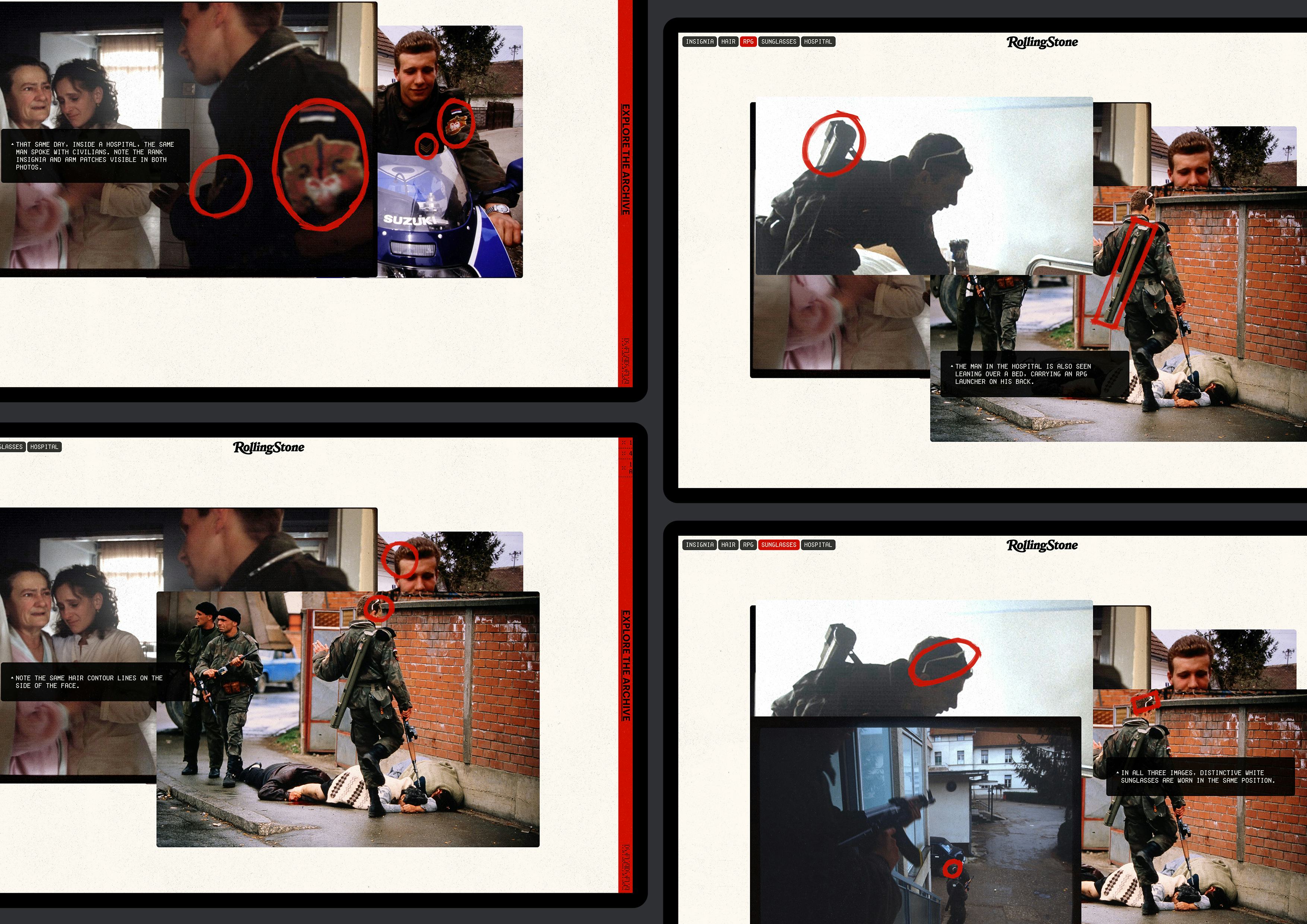


Deep-dive archives
We created a fully interactive evidence library where users can pan around to explore that primary content directly. And we separated critical evidence - The Photograph, Document and Network, into secondary pages, then offered them contextually during the main piece. Users can navigate a huge amount of content without feeling overwhelmed and it rewards subsequent viewings.

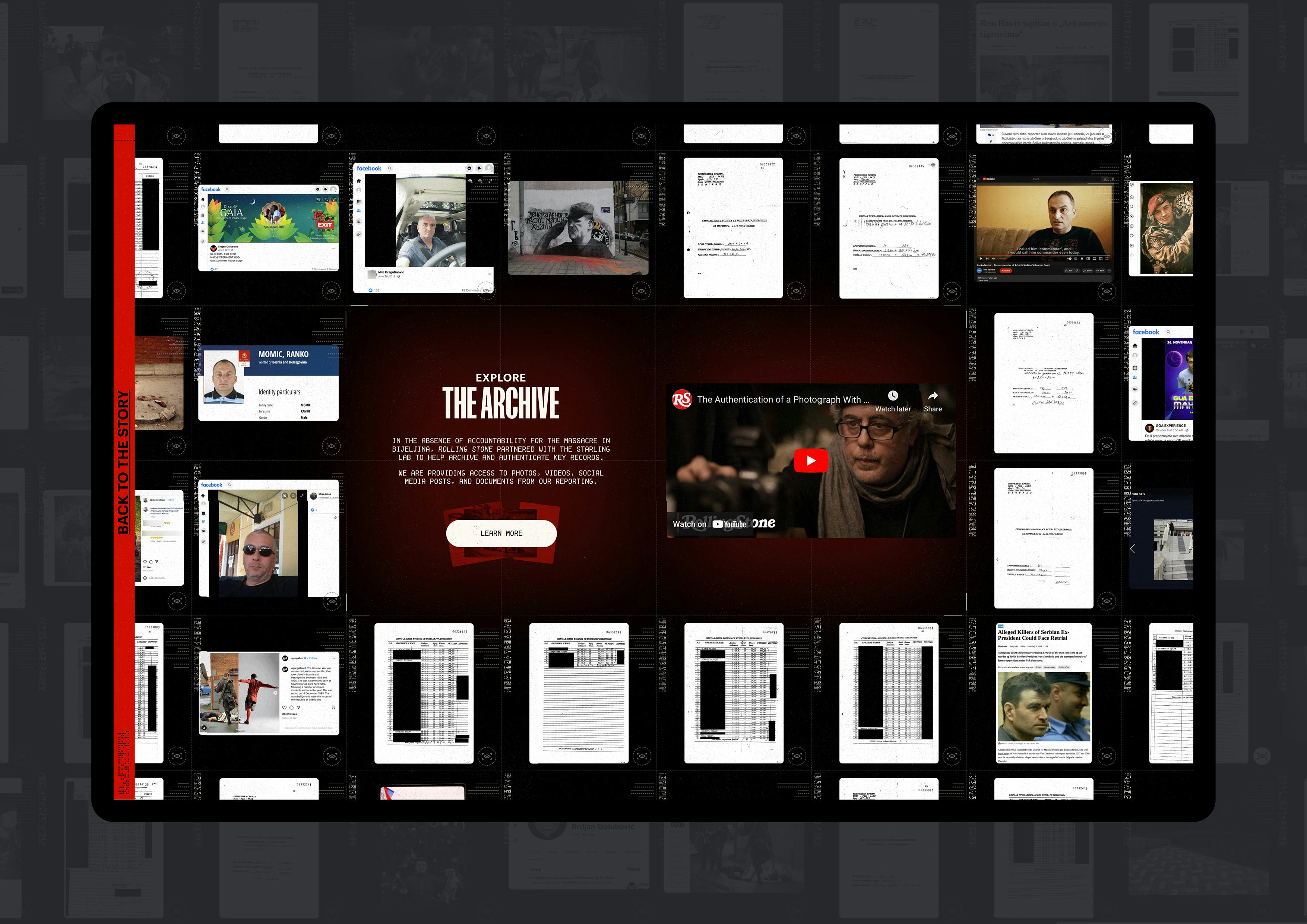



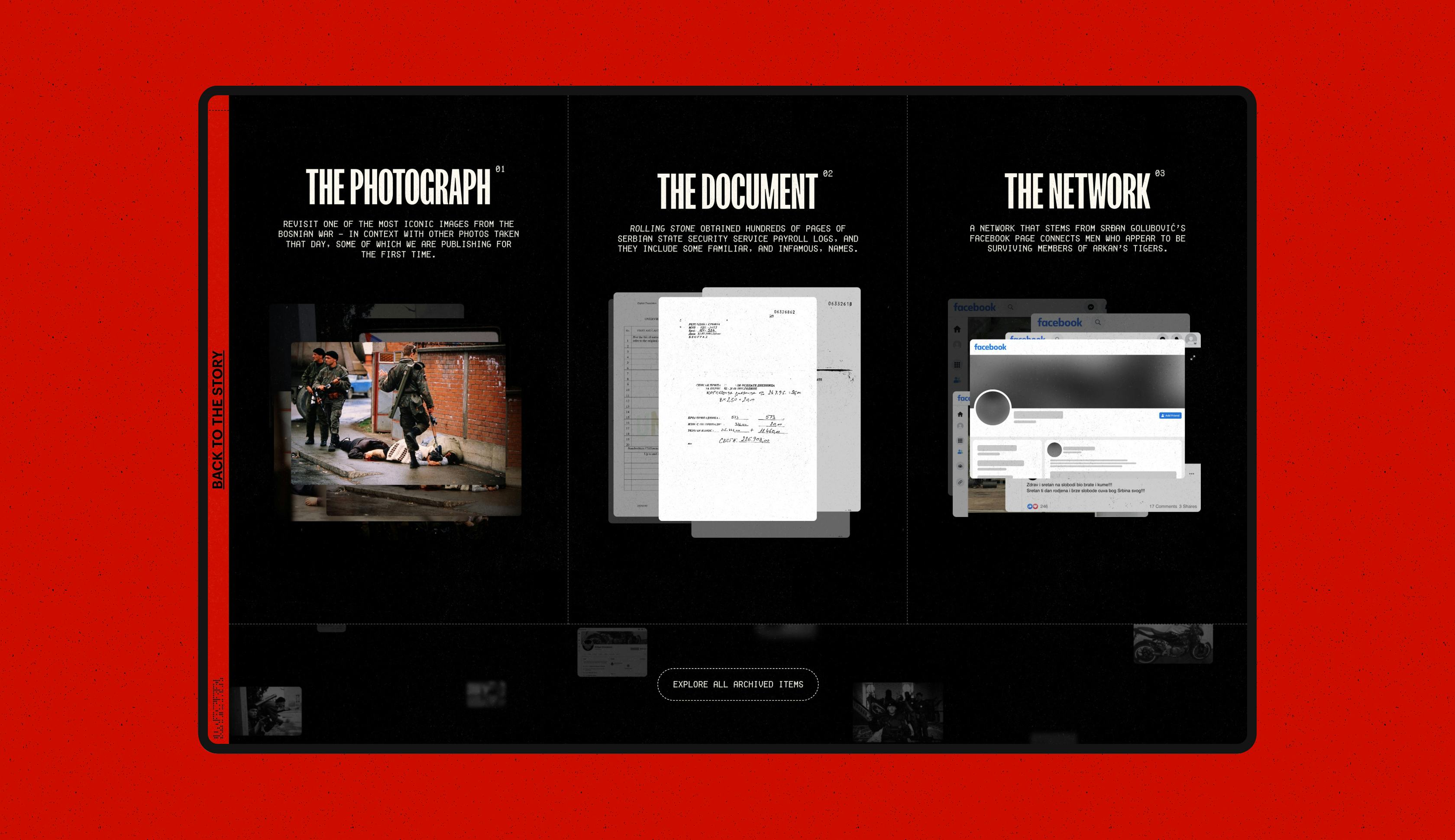

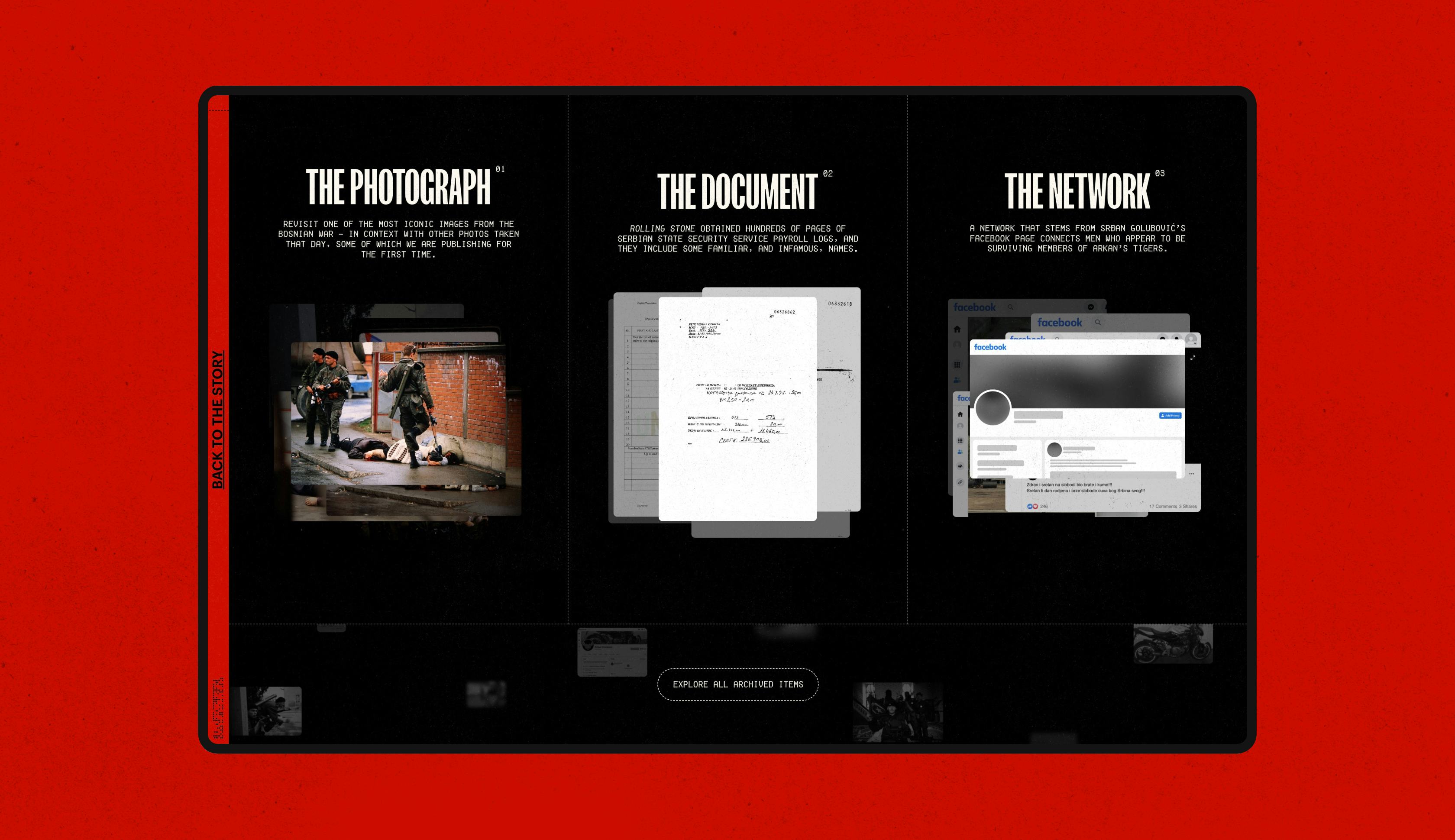

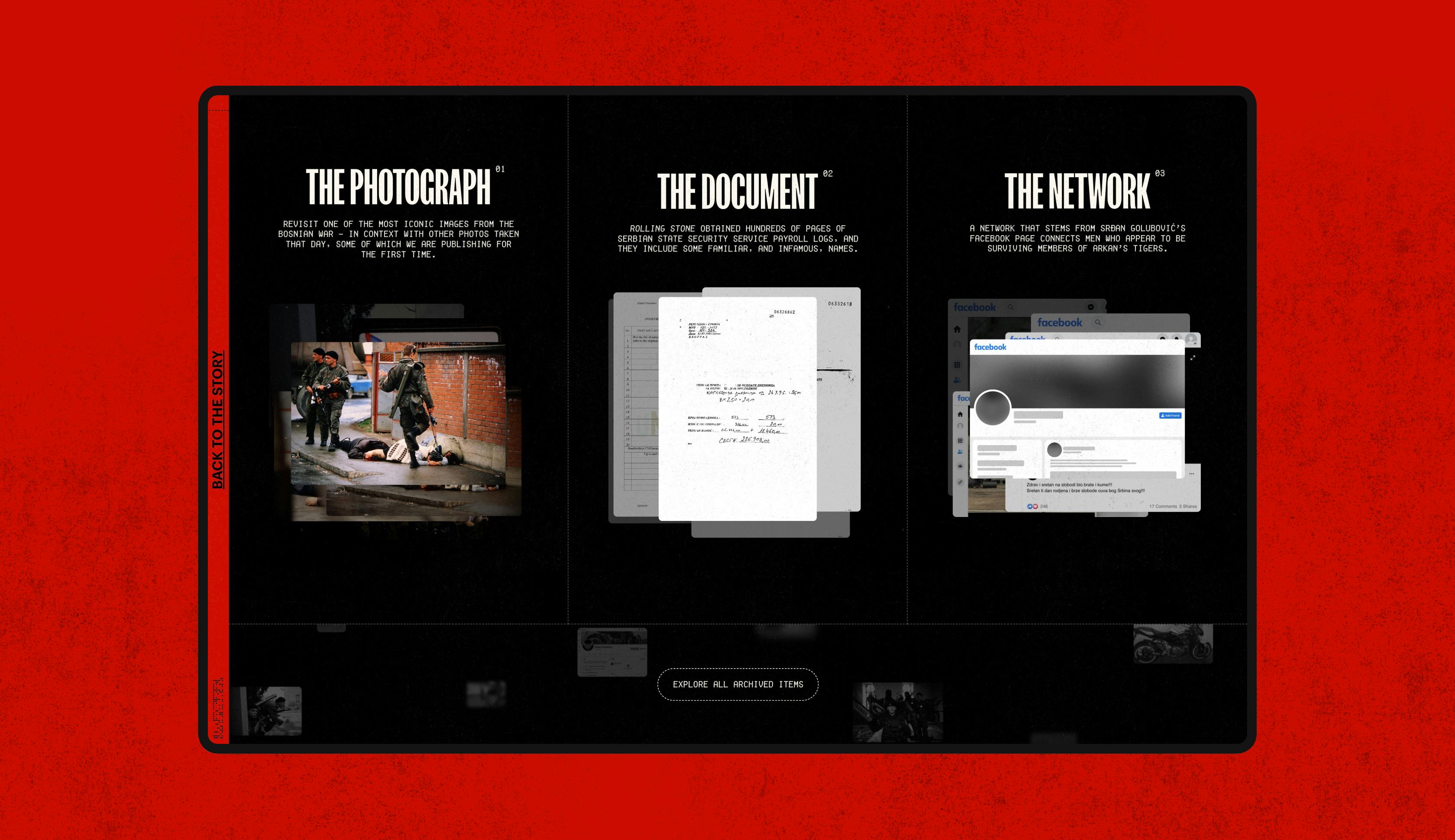
Web3 interfaces
We designed a unique “Authentication Certificate” view to show Starling Lab’s chain of custody tech which imprints every moment - from the click of the shutter, to an update in Photoshop - onto an immutable blockchain. We wanted the reader to assume the role of detective, moving back through time into the raw archival footage and going deeper into the research behind the story.


“An astonishing investigative article”
Peter Maass
American journalist and author

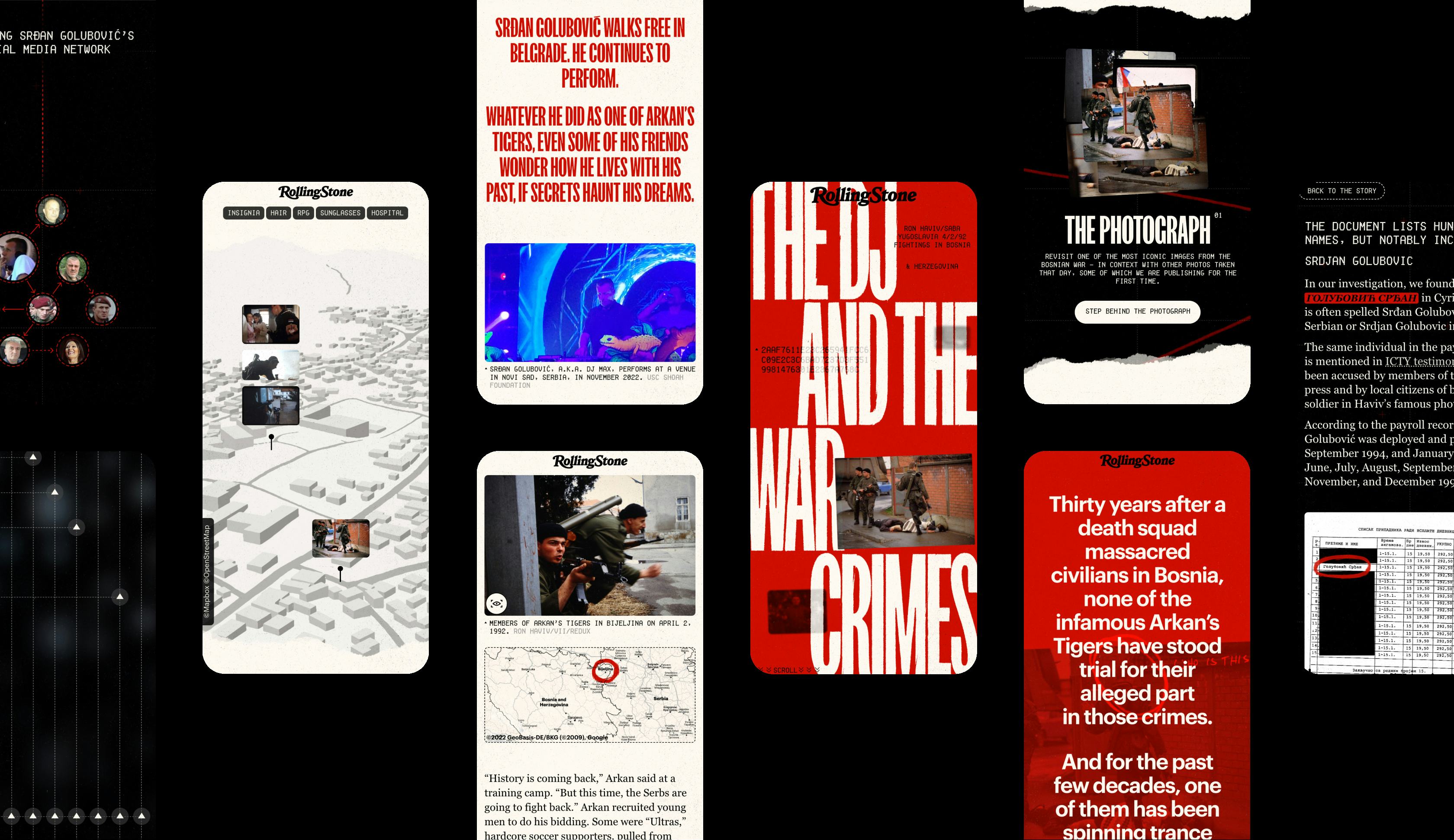
Finding the look
The art direction draws from references such as Daoud Sarhandi’s book Bosnian War Posters to give a nod to the strikingly raw aesthetic that grew out of wartime conditions, most evident in the postcards designed at the time by Trio Sarajevo.

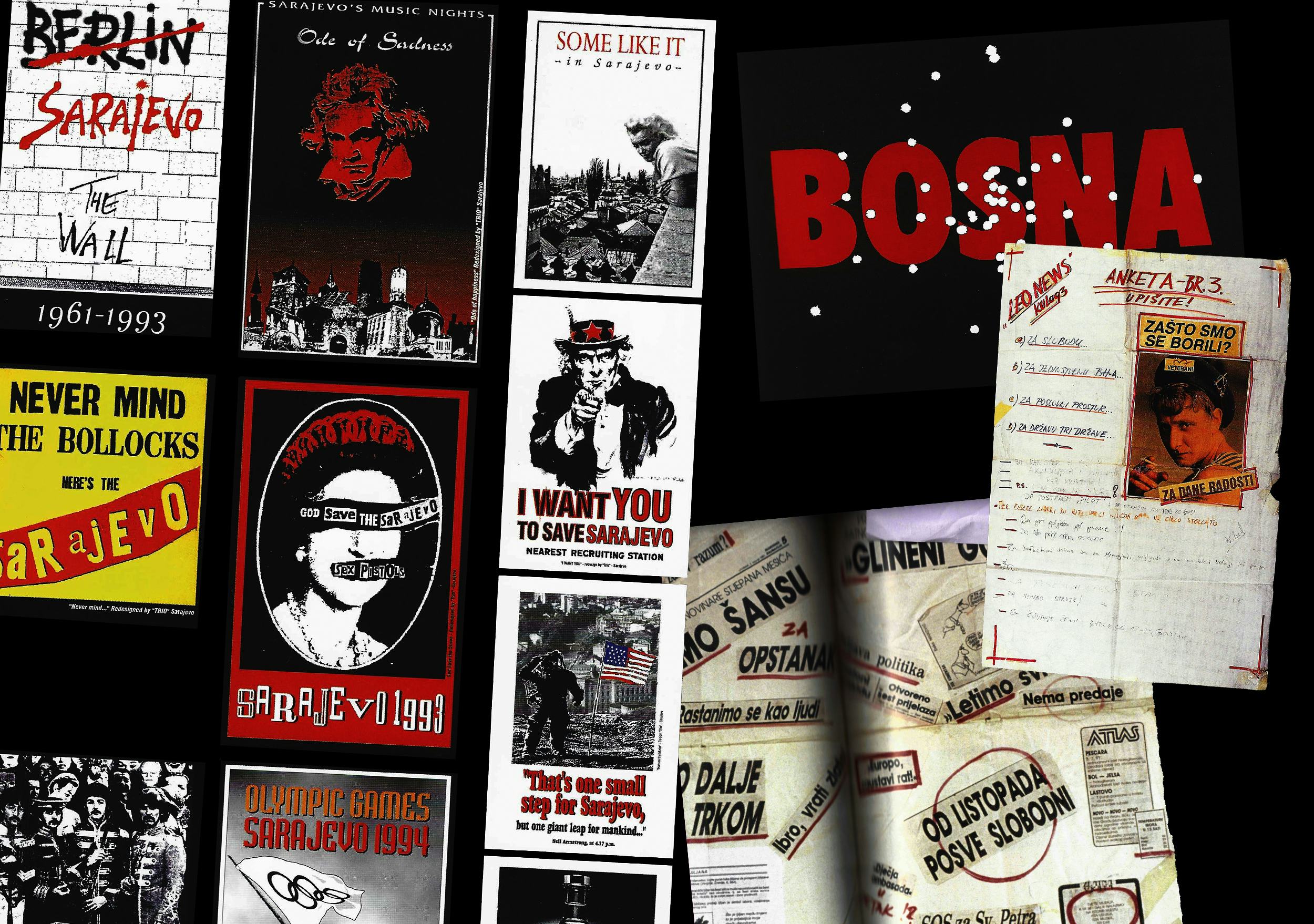
Drawing on the aesthetic of film photographers’ contact sheets, our art direction used pencilled annotations to point out important details. They act as the hand of the investigator, providing a visual thread that runs throughout the piece.
We laid the hand-drawn groundwork for the final grease pencil textures by Vince Warne.




To bridge the gap between the analog world of film photography and the modern-day blockchain technology underlying the investigation, we chose a dot-matrix monospace typeface that closely mirrors the one on photographer Ron Haviv’s film slides.

